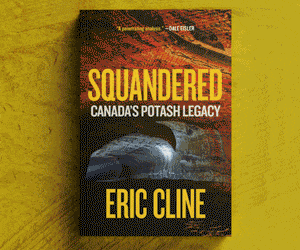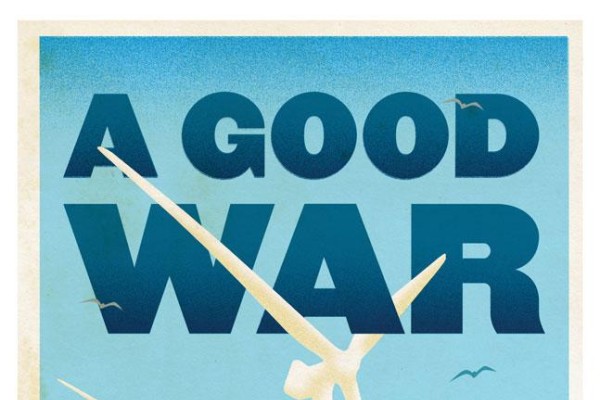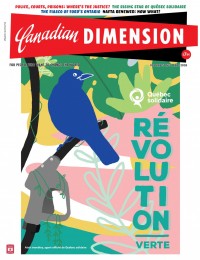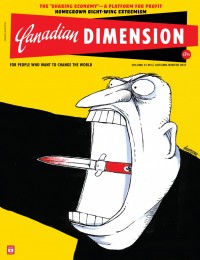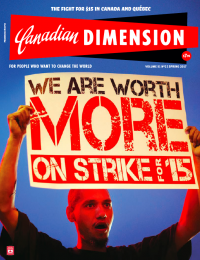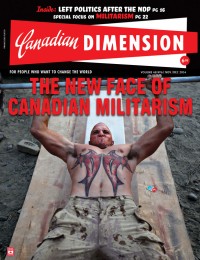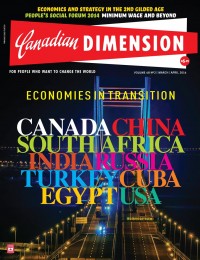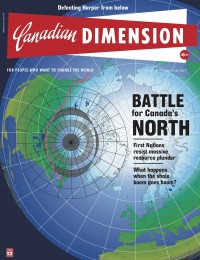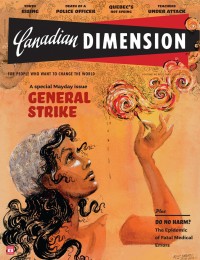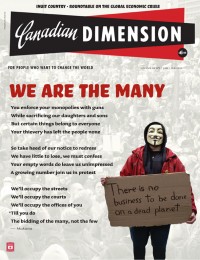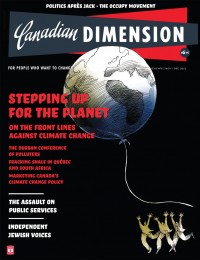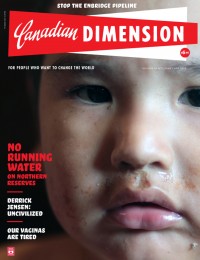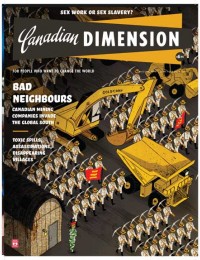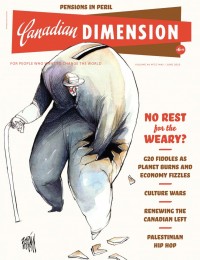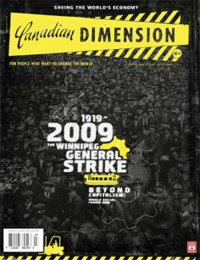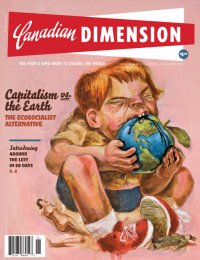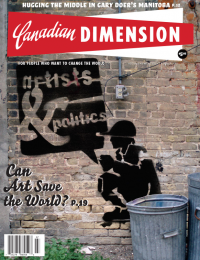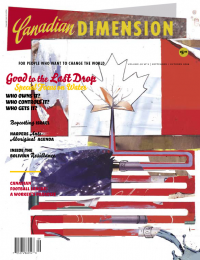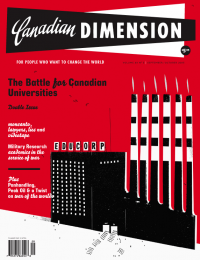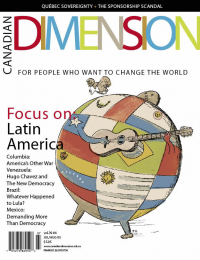Lest We Forget: Tar Sands and War

Lest we forget, the tar sands fuel war and the phrase ‘never again’ requires a deeper look at the historical development of the tar sands. Since the creation of the first tar sands operations, the nation-state of Canada viewed bitumen as part of its military strategy. During the cold war, Pierre Trudeau brought tar sands plants online to help provide ‘energy security’ to North America. Over the past decade, Canada has been a war profiteer and fuel tank for the US military, who have killed well over a million people since the turn of the new millennium.
During the late 1920s and 1930s, there were several entrepreneurs who attempted to create plants capable of extracting bitumen. These projects largely failed. However, during the Second World War Canada had renewed interest in securing crude for the war effort and bought the existing experimental plant. The plant was destroyed by fire in 1945. However, the experiment provided a blue print for subsequent developments and knowledge at the federal level of a huge reserve of potential energy.
During the cold war, Canada was viewed as an energy satellite to the US and an alternative to reliance on Middle East oil. US oil imports had been drastically impacted by the Organization of Petroleum Exporting Countries (OPEC) embargo of 1973. OPEC cut oil exports to the US in retaliation for US support of Israeli attacks on Syria and Egypt, as well as the occupation of Palestinian lands. In response to the embargo the Nixon hawks promoted ‘Project Independence’ as US energy policy, which envisioned complete US independence from foreign oil.
Project Independence was political rhetoric and key US policy makers considered Canadian crude as an important component of ‘Fortress North America’. At the time, oil executives and political lobbyists in the US argued for ‘Project Interdependence,’ which would see continental integration of North American oil production. Indeed, in the year following the OPEC embargo Alberta’s exports to the US increased by 21% and there were at least 2 offers in the billions by US companies to rapidly develop tar sands (Pratt, p. 78). Japan had offered a similar package, but was declined.
Within 5 years of the embargo large-scale development of Alberta’s tar sands was achieved by subsidiaries of the US companies Exxon and Gulf Oil. In 1974, the Liberal government under P. Trudeau caved to pressure by the US oil industry and Alberta creating a series of tax loopholes for US companies to develop the Syncrude project. In 1975, provincial and federal politicians met with potential investors in Winnipeg to discuss terms of the Syncrude project. The Trudeau government agreed to underwrite 15% of capital start up costs; Alberta underwrote 10% and Ontario 5%, (Pratt, pg. 175-176). By 1978, the Syncrude plant was online and Alberta’s tar sands became the focus of international discussions.
In 1979 the Athabasca Oil Sands Technology and Research Authority co-hosted the first United Nations (UNITAR) Future of Heavy Crude and Tar Sands with the United States Department of Energy. Delegates to the conference included state representatives’ from the US, USSR, Venezuela, Cuba, (amongst others), and oil giants Shell, British Petroleum, Suncor, Exxon and Imperial Oil, as well as the Royal Bank of Canada, Toronto Stock Exchange, and Department of Indian Affairs Canada. In cold war fashion Canada and the US were displaying to the world their dominance in tar sands commercial production. At the time the USSR had similarly been experimenting with tar sands development, but had not achieved the same scale of production.
Many conference presentations by Canada involved direct lobbies at investors and international government to finance further tar sands expansion. At a subsequent UN conference in 1998 on tar sands the Alberta Department of Energy proposed that a $20-25 billion dollar investment couldtriple production in Alberta within 20 years. In 2002, the year following 9/11, the tar sands received a record investment of $6.57 billion (2001 was $5.91 billion, and 2003 $5.05 billion). This influx of capital helped create the financial wave for Canada’s myopic economic policies and war profiteering under Harper.
Since 2003, Canada has been the primary pump for the US, displacing Saudi Arabia as the historic top exporter. Currently, 97% of crude exports from Canada go directly to the US and in 2015, tar sands exports reached over 3 million barrels per day. The US military uses 80% of the total fuel burned by the US government each year and bitumen is most easily converted to jet and diesel fuel, both used heavily by the military. Thus, tens of millions of barrels of Alberta crude have fueled the planes, drones, tanks, and other weapons that have killed so many in Iraq, Afghanistan, Pakistan, Yemen, Somalia, and Libya amongst other places over the last decade.
The US military is the single largest institutional consumer of oil globally. If it were a country it would rank 34th in terms of carbon emissions. The military consumes over 100 million barrels are each year, representing a major source of global carbon emissions. So, not only are US wars responsible for creating refugee crisesthrough imperial aggression, its emission have contributed to the growing climate refugee crisis. The Environmental Justice Foundation has estimated that the number of global climate refugees could be as high as 150 million by 2050.
War, and the resulting social and economic destabilization for affected countries has been a contributing factor to higher oil prices over the past decade, making tar sands extremely lucrative. The recent OPEC exports have obviously undermined Alberta’s profits and several major projects have been shelved. However, despite economic and production set backs, exports from Alberta to the US continue to increase.
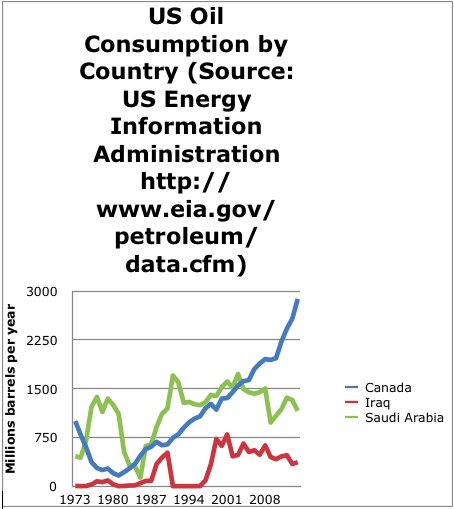
Since 2001, Alberta’s royalties have totaled approximately $2.8 billion and sale revenues for companies have totaled approximately $105 billion. Between 2001 and 2012, $160 billion were invested in tar sands. During this period of heavy investment and profit the report Body Count by IPPNW Germany, Physicians for Social Responsibility, and Physicians for Global Survival estimates that over 1 million died in Iraq, and over 200, 000 in Afghanistan.
Canada’s international war profiteering through tar sands extraction has been done at the expense of Indigenous communities domestically and can be seen as part of a longer war of colonialism. Fueling wars abroad has left Alberta’s north itself a war zone. As of Jan 2013, 715 km2 of land had been destroyed by tar sands extraction. Several reports in Fort Chipewyan and surrounding downstream communities in Alberta have shown significant impacts from tar sands operations on community health, ecological integrity, and many are concerned about the ability of future generations to exist amidst the pollution. To date, these concerns have been largely ignored.
The pattern of ignoring health and environment concerns is repeated in Southern Ontario. Aamjiwnaang First Nation, where tar sands arerefined, has been experiencing extreme pollution exposure for decades resulting in alarming figures like two girls being born for each boy, high rates of cancer, miscarriages, and respiratory illness, amongst other health concerns. All levels of government have ignored repeated calls for better health and environmental monitoring in the community.
Over the next 25 years, the Canadian Energy ResearchInstitute predicts $514 billion in tar sands investments and approximately $3.5 billion in revenues for the Alberta government. The pressure on J. Trudeau to continue tar sands expansion will be significant. Given his father’s legacy and his own supportive statements for the industry, it will be up to social movements to keep pressure on the Canadian government to stop tar sands extraction. Global peace, as well as justice for Indigenous communities involves shutting down the tar sands. Let’s do this.
Dave Vasey is an environmental justice activist living in Toronto.



